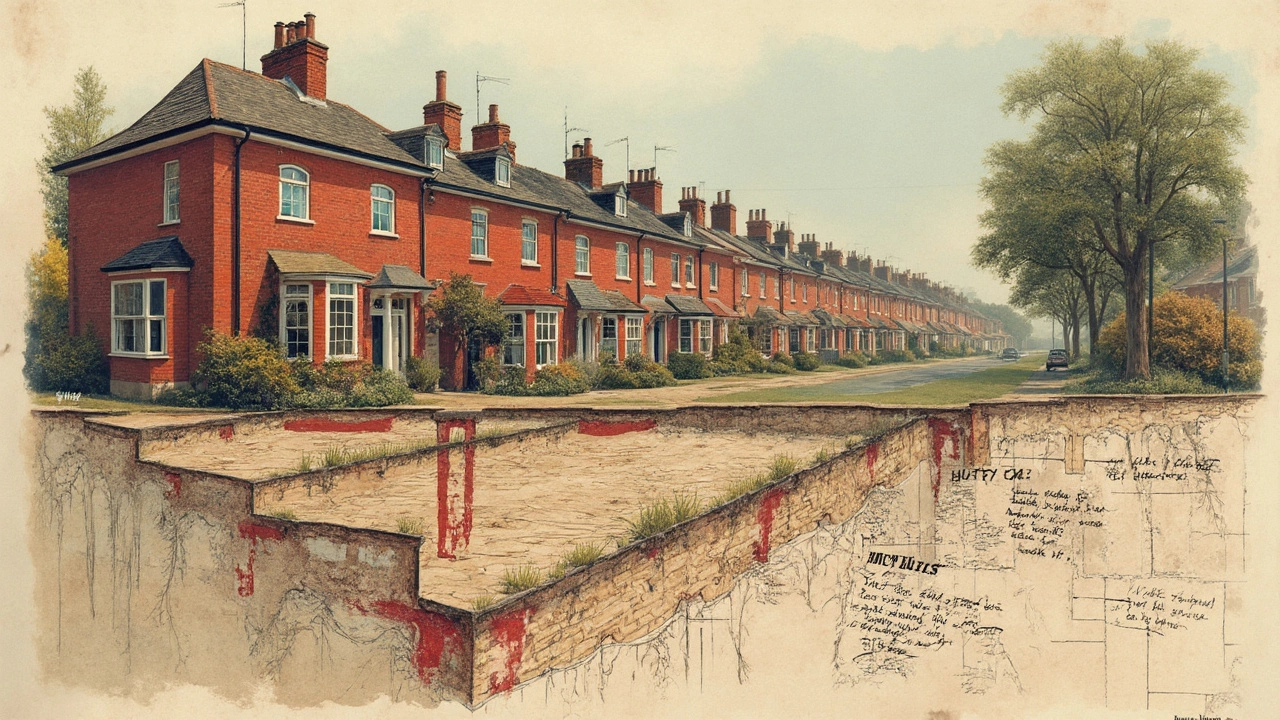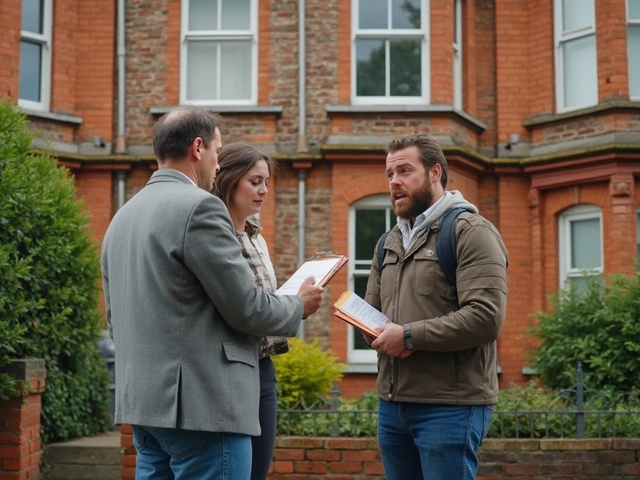Building Insurance: What’s Not Covered When It Comes to Foundation Repair

Think your building insurance has your back when your foundation starts cracking? Not so fast. Most policies have a whole list of things they just don’t pay for, especially when it comes to foundation repair. The tricky part is that these exclusions are buried in the fine print, and nobody finds out until after damage shows up and a claim gets denied.
Here’s the thing: insurance is there for sudden, accidental damage—not slow, creeping problems like settling soil or tree roots messing with your slab. Those sinking floors, hairline cracks, or doors that won’t shut right? If they didn’t happen from something like a burst pipe or a real disaster, chances are you’re on your own for fixing them.
If you own a house built on clay soil or in an area with a lot of shifting ground, pay extra attention. These conditions are red flags for most insurers, and they’ll use them as reasons to turn down foundation-related claims. Don’t wait to find out where you stand—it’s worth checking your policy or calling your provider before trouble pops up.
- Typical Exclusions in Building Insurance
- Foundation Problems Insurers Refuse to Pay For
- Why Maintenance Matters More Than You Think
- Steps to Avoid Nasty Surprises
Typical Exclusions in Building Insurance
This is the stuff nobody likes to talk about until it’s too late—what your building insurance skips when the foundation starts acting up. Most policies have a list of standard exclusions and if you’re not familiar with them, your bank account might take a much bigger hit than you expected.
- Settlement and movement: If your home’s foundation shifts because of soil expansion, contraction, or regular settling over time, insurance almost never touches it.
- Wear and tear: If your cracked walls or uneven floors are simply from the house aging, you’re not getting a payout. Normal aging is always marked as your problem.
- Poor workmanship: If the original contractor cut corners or skipped steps, insurers say it’s not their fault and won’t pay when mistakes show up years later.
- Neglected maintenance: Skipping regular upkeep—things like cleaning gutters or patching outside seals—puts repair costs on your shoulders, not the insurer’s.
- Tree root damage: Roots can push and crack foundations, but most policies rule this out.
- Water seepage: Slow leaks or groundwater creeping into your basement? Insurers will almost always say no.
Take a look at what’s usually left uncovered:
| Issue | Usually Covered? |
|---|---|
| Sinking/settling foundation | No |
| Cracks from poor maintenance | No |
| Earth movement (excluding earthquakes if not separately insured) | No |
| Sudden burst pipe causing damage | Yes |
| Water damage from flooding | No (unless you have separate flood insurance) |
| Termite or pest damage | No |
Here’s something wild: around 80% of claims for foundation issues are denied because they’re tied to these common exclusions. It pays to read your policy with a highlighter and call your insurer if any part sounds vague or confusing. Never assume “building insurance” covers it all—especially when we’re talking about your building insurance and the foundation underneath.
Foundation Problems Insurers Refuse to Pay For
Here’s where things get real: building insurance is picky, especially when it comes to foundation repair issues. Most policies won't touch problems that happen slowly over time. Say your foundation cracks because your soil shrank during a dry spell, or water seeps in after years of bad drainage—these are pretty much never covered. They call this “gradual damage,” and insurance companies steer clear of it.
Let’s look at the stuff that’s nearly always on their "no way" list for payouts:
- Normal settlement—When your house naturally moves and settles into the ground over the years, insurance sees that as just aging, not a disaster.
- Poor construction or faulty workmanship—If your builder cut corners, insurers won't step in, even if the damage is serious.
- Lack of maintenance—Let that rainwater pool next to your foundation? Insurers expect you to take care of these things, so it’s on you if your slab shifts or cracks from neglect.
- Tree roots and invasive plants—Big roots can lift or break your slab, but that’s another maintenance issue that doesn’t make the coverage cut.
- Soil movement from drought or flood—Big changes in the ground (if not linked to a covered event like a plumbing leak) make them run the other way.
- Wear and tear—If something just gets old and breaks down, prepare to pay out-of-pocket.
Check out this quick table for a snapshot of what’s usually not covered versus what sometimes is:
| Foundation Issue | Usually Covered? |
|---|---|
| Normal settlement | No |
| Poor construction | No |
| Water damage from burst pipe | Sometimes |
| Soil shrinkage/swell | No |
| Flood or earthquake | Only with specific extra coverage |
| Termite damage | No |
If your foundation crack comes from normal settlement or neglect, don’t expect your building insurance to help. But if a water pipe bursts under your slab and causes a sudden collapse, you might have a shot—just read the policy first or get your agent to spell it out before trouble starts.

Why Maintenance Matters More Than You Think
Here’s the part most homeowners miss: insurance companies don’t want to pay out for stuff you could have stopped. That’s why keeping up with regular maintenance isn’t just about peace of mind—it's your first line of defense when it comes to keeping those foundation repair bills out of your pocket. A 2023 survey from HomeAdvisor showed that 63% of rejected foundation insurance claims involved a lack of basic home maintenance, like clearing gutters or grading soil away from the house.
Insurers see foundation damage from water leaks, poor drainage, or massive tree roots as a sign you weren’t on top of things. You can’t ignore the small stuff and expect your insurer to bail you out. As Doug Heller from the Consumer Federation of America puts it:
“Insurance will help with sudden disasters, but the stuff that comes from neglect? You’re almost always on your own.”
If you want to avoid that sinking feeling (literally), make a habit of doing these things:
- Clean your gutters so water doesn‘t pool next to the foundation.
- Keep soil graded away from your house, not toward it.
- Fix plumbing leaks right away—slow leaks cause major problems over time.
- Don’t plant big trees too close to your home’s foundation.
- Check for cracks every few months, especially after big storms or droughts.
Want to see how quick neglect can cost you? Here’s a simple breakdown of average costs involved when you skip regular care versus fixing a problem early:
| Task | Do-It-Yourself Prevention | Cost if Neglected |
|---|---|---|
| Gutter cleaning | $0–$150/year | Foundation water damage: $7,000–$15,000 |
| Soil grading | $500–$1,000 | Slab repairs: $10,000+ |
| Fixing leaks | $150–$350 | Mold & foundation damage: $6,000–$20,000 |
Spending a few hundred bucks a year up front is a lot better than getting stuck with repairs ten times that amount—and your insurance won’t chip in unless you do your part first.
Steps to Avoid Nasty Surprises
So you want to dodge those expensive foundation bills—and the rejection letter from your insurer. Here’s what actually works in the real world.
- Read Your Policy—For Real: It sounds boring, but most folks never go over the fine print in their building insurance. Look for words like “settlement,” “earth movement,” or “wear and tear”—those usually mean exclusions.
- Check Your Soil Type: If you live in Texas, parts of Oklahoma, or anywhere with a lot of clay, foundation movement is super common. Insurance companies know this and typically add special exclusions for these areas.
- Keep Up With Maintenance: Insurers almost always deny claims for damage that could’ve been avoided with regular upkeep. Fix leaking gutters, make sure your yard drains away from your house, and patch cracks early.
- Document Everything: Take photos of your foundation and any cracks every year. If a disaster does strike, you’ll have proof it wasn’t an old problem.
- Get an Expert Checkup: A structural engineer or foundation pro can spot early signs of trouble that you might miss. Paying for a checkup every few years can save you a fortune down the road.
- Ask About Extra Coverage: Some insurers offer endorsements or riders for things like foundation repair—even if the basic policy says no. It costs more, but it can be worth it in risky zones.
"Regular home maintenance isn’t just for peace of mind—it’s the number one reason insurers pay a claim instead of turning you down," says Mike Canning, lead underwriter at HomeSecure Insurance Group.
Check out how folks often get tripped up in the table below:
| Reason Claims Get Denied | Percent of U.S. Homeowners Affected (2023) |
|---|---|
| Soil movement/settling | 26% |
| Poor drainage or plumbing leaks | 19% |
| Lack of maintenance or neglect | 43% |
| Improper construction | 12% |
Bottom line? Staying on top of maintenance and knowing what your building insurance actually does (and doesn’t) protect saves you time, money, and even those late-night worries about sagging floors. Nobody likes surprises when it comes to huge repair bills.


